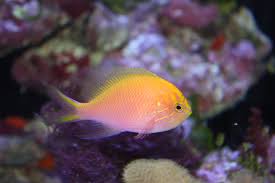Dragons in Chinese Tapestries and Wall Paintings: A Symbol of Power and Prosperity

Dragons are one of the most powerful and enduring symbols in Chinese culture, representing strength, wisdom, and good fortune. In Chinese art, the dragon frequently appears in various forms, with its image woven into tapestries and painted onto wall murals. These artistic representations serve not only as decoration but also as a powerful expression of cultural values and beliefs. This article explores the significance of dragons in Chinese tapestries and wall paintings, highlighting how they are used to convey themes of protection, prosperity, and imperial authority.
The Symbolism of the Dragon in Chinese Art
In Chinese tradition, the dragon is considered a benevolent and auspicious creature. It is often associated with the emperor and imperial authority, symbolizing the divine right to rule. Dragons are also linked to the natural elements, especially water, as they are believed to control rain, rivers, and seas. As such, the dragon is seen as a bringer of good fortune and prosperity, playing a central role in both spiritual and practical aspects of Chinese life.
The importance of the dragon is evident in its prominent role in Chinese art. Whether in tapestries, murals, or sculptures, the dragon is often depicted in intricate and vivid detail, conveying both power and beauty. The dragon is frequently portrayed in dynamic poses, often winding through clouds or soaring across the sky, symbolizing its connection to the heavens and the cosmic forces.
Dragons in Chinese Tapestries: Woven Wonders
Chinese tapestries are an ancient form of textile art, with a rich tradition that spans thousands of years. The art of weaving dragons into tapestries began as early as the Tang Dynasty (618–907 CE) and reached its peak during the Ming (1368–1644) and Qing (1644–1912) Dynasties. These tapestries were often created for imperial palaces, temples, and the homes of wealthy elites, serving as both decorative and symbolic pieces.
The dragon, particularly the five-clawed dragon, became a central motif in many tapestries. In these textiles, the dragon’s image was often used to convey the imperial authority of the ruling dynasty. The five claws of the dragon were considered a symbol of the emperor, and it was believed that only the emperor was worthy of wearing garments or possessing objects decorated with a five-clawed dragon. These dragons were often surrounded by other auspicious symbols, such as clouds, phoenixes, and lotus flowers, which further enhanced their positive meanings.
Tapestries with dragon motifs were woven using luxurious materials such as silk, gold thread, and precious gems. These tapestries served as an important status symbol, with their intricate designs and rich colors reflecting the wealth and power of the owner. The presence of dragons in these textiles also served as a form of protection, as it was believed that the dragon could ward off evil spirits and bring good fortune to the home or palace.
Dragons in Chinese Wall Paintings: A Divine Presence
Wall paintings have long been an integral part of Chinese architecture and interior design, especially in temples, palaces, and tombs. The depiction of dragons in these murals serves as a visual representation of cosmic power and divine protection. In traditional Chinese murals, dragons are often shown soaring through clouds, coiling around pillars, or swimming in water, all of which symbolize the creature’s connection to both the earthly and heavenly realms.
During the Tang and Song Dynasties (618–1279 CE), dragon murals became more elaborate and refined. The dragons were painted with a sense of movement and vitality, emphasizing their power and grace. These murals often adorned the walls of imperial palaces and temples, serving as a means of asserting the divine authority of the emperor and reinforcing the cultural importance of the dragon as a symbol of protection and prosperity.
In later periods, such as the Ming and Qing Dynasties, the style of dragon wall paintings became more ornate, with elaborate details and bright, bold colors. These paintings often featured dragons surrounded by clouds, flames, and other symbolic elements, creating a sense of grandeur and awe. The use of dragon imagery in wall paintings was not limited to the elite classes; many public buildings, including government offices, were decorated with dragon murals to assert the power and unity of the nation.
The Cultural Significance of Dragon Tapestries and Wall Paintings
The use of dragon imagery in tapestries and wall paintings is deeply intertwined with the cultural values of Chinese society. These artworks served not only as decoration but also as expressions of faith, power, and identity. For the emperor, the dragon was a symbol of his divine right to rule, as well as a protective force that ensured the prosperity and well-being of the nation. For the common people, the dragon symbolized good fortune, protection, and the promise of a prosperous life.
Dragon tapestries and wall paintings also reflect the Chinese worldview, which emphasizes harmony between humans, nature, and the cosmos. The dragon’s connection to water, clouds, and the heavens underscores the belief that the natural world is governed by forces that are both mysterious and benevolent. These works of art serve as a reminder of the delicate balance between the earthly and spiritual realms, and the dragon is portrayed as a guide that bridges this gap.
The Influence of Dragons on Modern Chinese Art
Although the traditional use of dragon imagery in tapestries and wall paintings is most prominent in the ancient and imperial periods, the influence of dragons continues to be seen in modern Chinese art. Contemporary Chinese artists often draw upon the rich symbolism of the dragon, reinterpreting its form and meaning in new and innovative ways. Whether in traditional calligraphy, modern paintings, or digital art, the dragon remains a powerful symbol of Chinese identity, culture, and values.
In addition to its continued presence in fine art, the dragon also appears in popular culture, including in films, fashion, and branding. Its legacy endures as a symbol of Chinese heritage, a connection to the past, and a representation of strength, protection, and good fortune.
Conclusion
Dragons in Chinese tapestries and wall paintings are not only stunning examples of artistic craftsmanship but also deeply symbolic representations of power, protection, and prosperity. Throughout Chinese history, the dragon has been a central figure in both imperial and popular art, reflecting the values, beliefs, and aspirations of Chinese society. As symbols of divine authority and cosmic power, dragons continue to inspire and captivate audiences, both in traditional artworks and modern interpretations. By exploring the history and significance of dragons in these art forms, we gain a deeper understanding of the role the dragon plays in Chinese culture and its enduring legacy as a symbol of strength and fortune.









